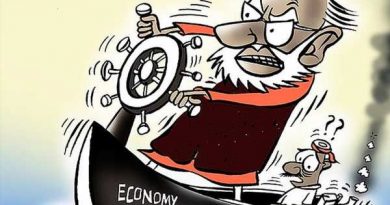Here's the tiny—yet brilliant—'short email' rule one web designer created to manage his overflowing inbox problem
Our days are defined by a relentless barrage of incoming messages and back-and-forth digital conversations — a state of constant, anxious chatter in which nobody can disconnect, and so nobody has the cognitive bandwidth to perform substantive work.
There was a time when tools like email felt cutting edge, but research reveals that the workflow they helped create has become a productivity disaster, reducing profitability and perhaps even slowing overall economic growth.
Equally worrisome, it makes us miserable. Humans are simply not wired for constant digital communication. We have become so used to an inbox-driven workday that it's hard to imagine any brilliant alternatives.
But they do exist.
The 'short email' movement
In 2007, a web designer named Mike Davidson posted an essay on his personal blog titled "A Low-Fi Solution to Email Overload," in which he described his frustration with the asymmetric nature of email communication.
"Oftentimes the sender will ask two or three open-ended, one-sentence questions which elicit multi-paragraph answers," he writes. "In these cases, the sender spends one minute — while the receiver is asked, implicitly, to spend maybe an hour."
Davidson's solution? Keep all of his emails short.
He identified the 160-character count of an SMS text message as a reasonable target, but, recognizing that counting characters would require some sort of special software plug-in, he instead used a simple approximation: He would keep all his emails to five sentences or fewer.
To "politely" explain this rule to his correspondents, Davidson launched a simple website that briefly explains the policy on a minimalist landing page.
He then added the following signature to the bottom of all his emails:
- Q: Why is this email five sentences or less?
- A: http://five.sentenc.es
As Davidson concludes in this introductory post: "By ensuring that all e-mails I send out take the same amount of time to send, I am evening the playing field between emails and attending to many more of them in the end."
Davidson called the policy a "huge difference," adding that "what makes it all the more easy is that before I even give my response, I already know it's going to be five sentences max, so there is little reason to procrastinate about it."
The idea of strictly limiting email length is more than a gimmick. It instead represents a step that too few take in our current digital age: the placing of clear constraints around what email should and should not be used to accomplish.
The hyperactive hive mind workflow wants email to be a neutral carrier that supports flexible, unstructured, ongoing conversations of all types. The short-email movement pushes back on this commitment. It specifies email as something useful for short questions, short answers, and short updates, but demands that anything more complicated be handled using a different type of communication better suited to the exchange.
This might be a pain in the moment, but it's a protocol that will deliver a lower average cost in the long run.
Cal Newport is an associate professor of computer science at Georgetown University, where he specializes in the theory of distributed systems. He's the author of seven books, including "A World Without Email," "Digital Minimalism" and "Deep Work." He's also a regular contributor to national publications such as The New Yorker, The New York Times, and Wired, and is a frequent guest on NPR. Cal lives with his wife and three sons in Takoma Park, Maryland. Follow him on Twitter @CalNewport2.
Don't miss:
- The most mentally tough people apply the 1% 'marginal gains' rule, says performance expert—how it works
- Psychologist Adam Grant: This is one of the most harmful questions parents can ask their kids
- Warren Buffett has a 'simple' test for making tough decisions—here's how it works
Check Out: The best credit cards for building credit of 2021
Source: Read Full Article



